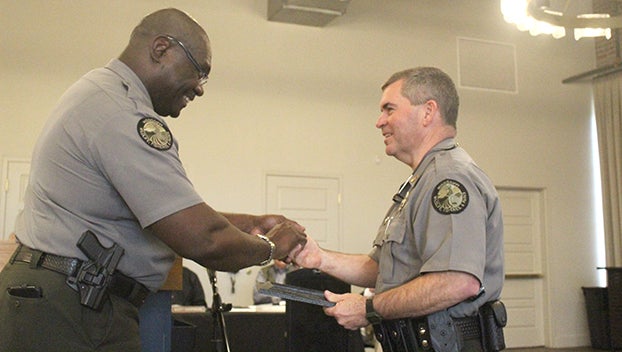How will Lincoln County supervisors decide which bridges to fix?
Published 9:26 pm Tuesday, July 25, 2017
Q: How will Lincoln County supervisors decide which bridges need to be replaced or repaired?
A: Quite a few bridges across the county need some level of repair. Materials deteriorate over time from use and misuse and bridges need to be worked on, just like roads. Recently, the Lincoln County Board of Supervisors discussed the probability of issuing $5 million in bonds to pay for bridge repairs.
Slightly more than a third of the 308 bridges in Lincoln County have some wooden components — meaning they may have timber pilings, abutments, rails or some other part made of wood.
County engineer Ryan Holmes told supervisors Monday that Lincoln County probably has more bridges that include timber than any other county in the state. It’s at least in the top three, he said.
Bridges are rated on a 10-point scale — 0 is failed and beyond repair while 9 is considered excellent. Of the timber bridges inspected by Dungan Engineering recently, 89 were rated 3 or less. Bridges rated 3 are in serious condition, rated 2 are in critical condition and rated 1 are considered imminent failure. Bridges rated 1 are closed to traffic until repaired.
Holmes took those 89 bridges and separated them into four additional categories of A, B, C and D — based on location and usage. “A” bridges are located on routes with the highest amount of traffic and daily use. “D” bridges are on routes with the least use.
The supervisors were given a list of all the low-rated bridges, divided into each of their five districts, with their rating of A-D, an estimate of repair costs and a date of when that bridge would come up next for inspection by the Mississippi Department of Transportation.
Holmes asked the board to review the list and assign their own ratings to them — to order them by what they considered to be the most pressing repair or replacement needs to the least — and return the lists to his office so a more accurate cost estimate can be determined for the bridges assigned the highest priority. Each district has a budget for infrastructure. Once supervisors have ranked the greatest needs on their lists, they will draw a line at the point where they can spend no more at this time for repairs. Bridge projects above the line are the ones that will be addressed.
The Local System Bridge Program has historically provided an average of $500,000 annually to the county for use in maintaining and repairing bridges. Funds approved in the 2016 state legislative session were released to counties in 2017, so those funds are available for use on bridges located on locally-maintained routes.
However, the Legislature did not approve funding of the LSBP for 2018 in its recent sessions, removing those monies from consideration for bridge upkeep and repair in 2018. Money from LSBP must be requested for specific bridge projects, and — according to District 3 Supervisor Nolan Williamson — takes an average of 465 days to receive. Bond money remains the alternative.
District 4 Supervisor Eddie Brown said that bridges that are on state aid routes will not be addressed with the bond money.
“It makes no sense to use local money on state aid roads where the state is supposed to pay for that,” Brown said. “We hope that they’re going to come through on that.”
Waiting for state funds has not helped the county so far, said Williamson, since no funds have come this year and the worst bridges need to be repaired as soon as possible.
“We’re not going to sit here and let all this infrastructure collapse,” Williamson said.
Brown said he is currently working with Holmes to assess which bridges can be replaced with box culverts, which can be placed for a fraction of the cost of repairing or replacing a bridge with new construction. He’s also taking a more critical look at the bridges in his district to make sure the ones that need attention the most are the ones that get it.
Holmes said each of the people who are responsible for inspecting and repairing the bridges have to be able to sleep at night, knowing they made the right choices to keep people safe.
“We take all this very seriously,” he said.





